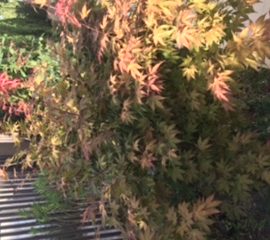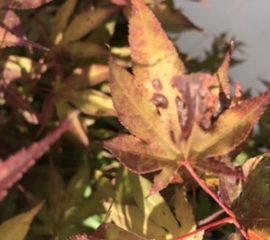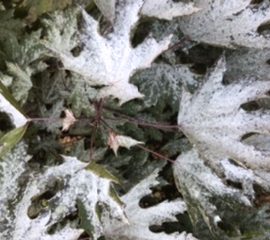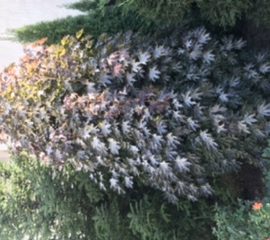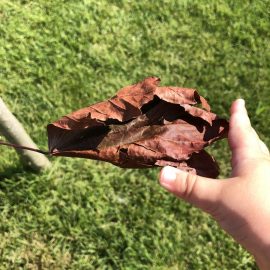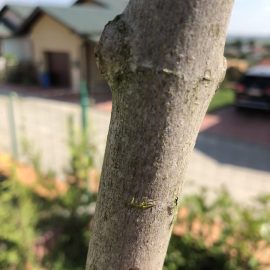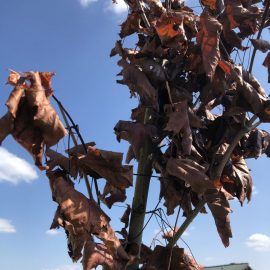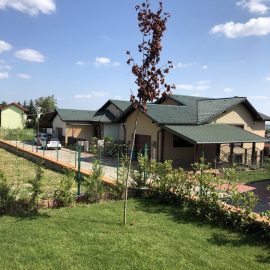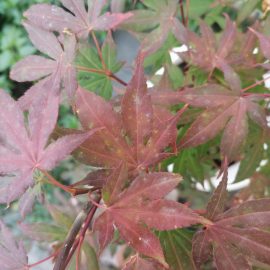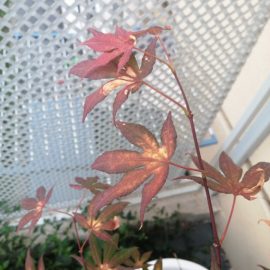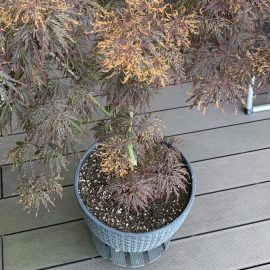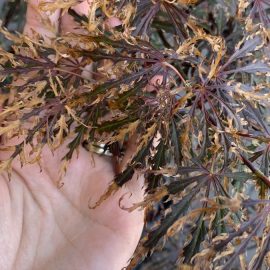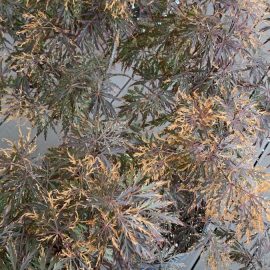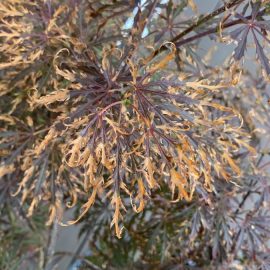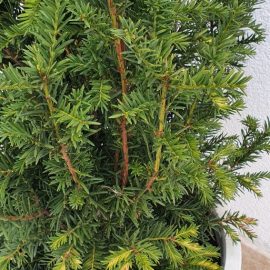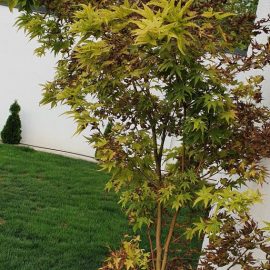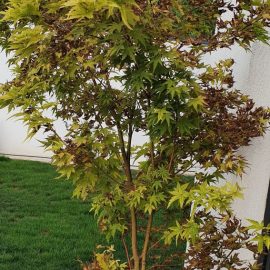Maple, planting guide and care work
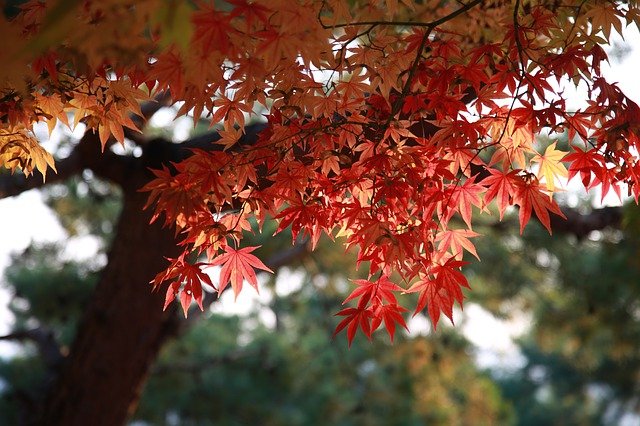
The genus Acer (maple) includes 110 species of trees and shrubs, native to Asia, Europe, North America, and North Africa. The species are decorative thanks to their general appearance and foliage. The leaves are deciduous, alternatively arranged, palmate or pennate. The flowers are green-yellow and have no decorative function, and the fruits are double samara, in some are beautifully colored, with decorative function.
Species and varieties
American maple (Acer negundo)
It is a tree up to 20 m tall. The trunk is irregular, with smooth, gray-green bark. The tree crown is irregular. The leaves are imparipinnate compounds, with 3-5 leaflets. The flowers are greenish-yellow and appear before leaves.
Japanese maple (Acer palmatum)
It is a small tree or shrub with very decorative foliage. The leaf blade is deeply lobed. In autumn the color of the leaves becomes carmine red.
Norway maple (Acer platanoides)
Tall tree, up to 25 m. The trunk is straight and tall, with gray bark. The tree crown is wide and ovate. The leaves are large, palmately lobed with sharp tips, and the veins between the lobes are rounded. The petioles have white latex. The flowers are green-yellow and appear before the leaves.



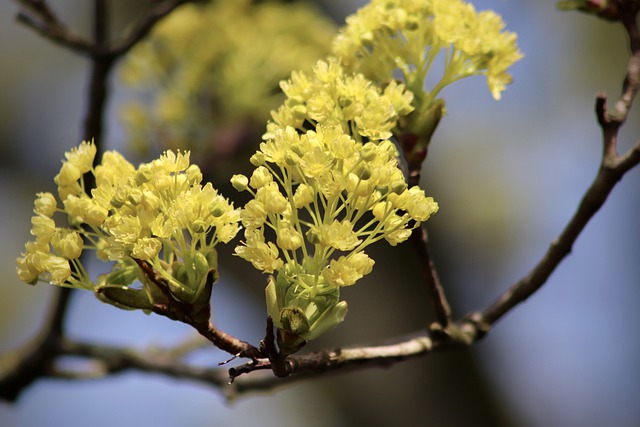
Silver maple (Acer saccharinum)
A tree with heights up to 15 m. The bark is gray and the tree crown is wide, ovoid rounded. The leaves have 5 sharp lobes, light green in color, with a whitish silvery underside. In autumn, the leaves turn yellow.
Sycamore maple (Acer pseudoplatanus)
A vigorous tree, reaching heights of 30-40 m. The trunk is straight, the bark is gray and smooth. The tree crown is wide and ovate. The palmate leaves have 5 lobes with sharp veins. In autumn, the tree turns yellow. The flowers appear after the leaves and are colored green-yellow.
Field maple (Acer campeste)
A tree up to 15 m tall. The trunk is gnarled and irregular, the bark has a cracked rhytidome, yellowish-gray with whitish spots. The leaves are small-medium, palmately lobed with 3-5 rounded lobes. The flowers appear after the leaves.
Tatarian maple (Acer tataricum)
It is a small tree or shrub, up to 10 m tall. It has a short trunk and a smooth, gray-brown bark. The leaves are pennate, ovate-acuminate, with irregularly serrated edges. It is decorative, especially thanks to the purple-red double samara fruits.
Amur maple (Acer ginnala)
It grows in the form of a small tree or shrub and reaches a height of up to 7 m. The leaves are trilobate, with an elongated central lobe. It is decorative at the beginning of summer thanks to the almost parallel, small double samara fruits, colored in red, and thanks to the intensely colored red foliage, in autumn.




Environmental conditions
Acer species are highly adaptable, growing in both mountain and lowland areas. It withstands very well in both bright places and partially shaded areas. Species such as Acer tataricum, Acer ginnala, and Acer palmatum need a milder climate to grow. Acer species do not require special care, managing to easily adapt to various environmental conditions.
Fertilization
It is not mandatory, but it can be done once a year, in spring, with slow-release fertilizers.
Recommended products
-
You can find products on a different store
Change Store -
You can find products on a different store
Change Store -
You can find products on a different store
Change Store -
You can find products on a different store
Change Store -
You can find products on a different store
Change Store -
You can find products on a different store
Change Store -
You can find products on a different store
Change Store -
You can find products on a different store
Change Store -
You can find products on a different store
Change Store -
You can find products on a different store
Change Store -
You can find products on a different store
Change Store -
You can find products on a different store
Change Store -
You can find products on a different store
Change Store -
You can find products on a different store
Change Store -
You can find products on a different store
Change Store -
You can find products on a different store
Change Store -
You can find products on a different store
Change Store -
You can find products on a different store
Change Store -
You can find products on a different store
Change Store -
You can find products on a different store
Change Store -
You can find products on a different store
Change Store -
You can find products on a different store
Change Store -
You can find products on a different store
Change Store -
You can find products on a different store
Change Store
Pruning
Maintaining prunings are recommended during the dormant period: autumn, after leaf fall, or early spring. Remove dry, broken, or damaged branches.
Recommended products
-
You can find products on a different store
Change Store -
You can find products on a different store
Change Store -
You can find products on a different store
Change Store -
You can find products on a different store
Change Store -
You can find products on a different store
Change Store -
You can find products on a different store
Change Store -
You can find products on a different store
Change Store -
You can find products on a different store
Change Store -
You can find products on a different store
Change Store -
You can find products on a different store
Change Store -
You can find products on a different store
Change Store -
You can find products on a different store
Change Store -
You can find products on a different store
Change Store -
You can find products on a different store
Change Store -
You can find products on a different store
Change Store -
You can find products on a different store
Change Store -
You can find products on a different store
Change Store -
You can find products on a different store
Change Store -
You can find products on a different store
Change Store -
You can find products on a different store
Change Store -
You can find products on a different store
Change Store -
You can find products on a different store
Change Store -
You can find products on a different store
Change Store -
You can find products on a different store
Change Store
Planting
It should be done from autumn to spring, during the entire dormant period, when the soil is not frozen. After planting, water with a large amount of water, then regularly during the first weeks. After that, water only when needed.
Recommended products
-
You can find products on a different store
Change Store -
You can find products on a different store
Change Store -
You can find products on a different store
Change Store -
You can find products on a different store
Change Store -
You can find products on a different store
Change Store -
You can find products on a different store
Change Store -
You can find products on a different store
Change Store -
You can find products on a different store
Change Store -
You can find products on a different store
Change Store -
You can find products on a different store
Change Store -
You can find products on a different store
Change Store -
You can find products on a different store
Change Store -
You can find products on a different store
Change Store -
You can find products on a different store
Change Store -
You can find products on a different store
Change Store -
You can find products on a different store
Change Store -
You can find products on a different store
Change Store -
You can find products on a different store
Change Store -
You can find products on a different store
Change Store -
You can find products on a different store
Change Store -
You can find products on a different store
Change Store -
You can find products on a different store
Change Store -
You can find products on a different store
Change Store -
You can find products on a different store
Change Store
Propagation
Acer species can be propagated through several methods: seeds, layering, and grafting. Sowing is usually done in spring or autumn, in the field, with layered seeds. For Acer rubrum and Acer saccharinum, sowing should be done in June, after the seeds are harvested. Through layering, the species of Acer negundo and Acer saccharinum are usually propagated. Most Acer varieties are propagated through grafting.
Diseases and pests
Among the pests, the most common are scale insects, aphids, and Lymantria dispar caterpillars. Among diseases, the most common are powdery mildew and verticillium.
Recommended products
-
You can find products on a different store
Change Store -
You can find products on a different store
Change Store -
You can find products on a different store
Change Store -
You can find products on a different store
Change Store -
You can find products on a different store
Change Store -
You can find products on a different store
Change Store -
You can find products on a different store
Change Store -
You can find products on a different store
Change Store -
You can find products on a different store
Change Store -
You can find products on a different store
Change Store -
You can find products on a different store
Change Store -
You can find products on a different store
Change Store -
You can find products on a different store
Change Store -
You can find products on a different store
Change Store -
You can find products on a different store
Change Store -
You can find products on a different store
Change Store -
You can find products on a different store
Change Store -
You can find products on a different store
Change Store -
You can find products on a different store
Change Store -
You can find products on a different store
Change Store -
You can find products on a different store
Change Store -
You can find products on a different store
Change Store -
You can find products on a different store
Change Store -
You can find products on a different store
Change Store














































































































































































































































































































































































































































